ART-tivities: The Visual Explorer's Tale #001
Inside the Old Residency Museum. I spent Christmas Eve absorbing myself in art, and now you get to read all about it.
I have not been to that many art spaces, but I doubt there is any kind of art gallery or exhibition in the world that I would not gravitate towards. These kinds of places are my favorites, and the Old Residency Museum, my spot of spots in Calabar, Nigeria, which happens to be the oldest building in this town at 140 years old, is a peaceful dwelling and a captivating sight for the eyes. Being my third time here within the span of 2 years, it would be unheard of if I did not put my pen to paper and pour out my feelings, expressing what this place means to me and the memory it holds of and for my people.
History
Built in Britain in 1884 and shipped in parts by the Royal Niger Company on the instruction of Consul Edward Hewett to Old Calabar, the then capital of pre-independence Nigeria, and erected on a hill overlooking the Calabar River, this one-storey edifice and once upon a time ‘Government House,’ made of Scandinavian red-pine wood, served as the residence and administrative office of the British officials during the colonial era. Here, both the Northern and Southern Protectorates of Nigeria were administered before it was amalgamated by Lord Lugard in 1914.
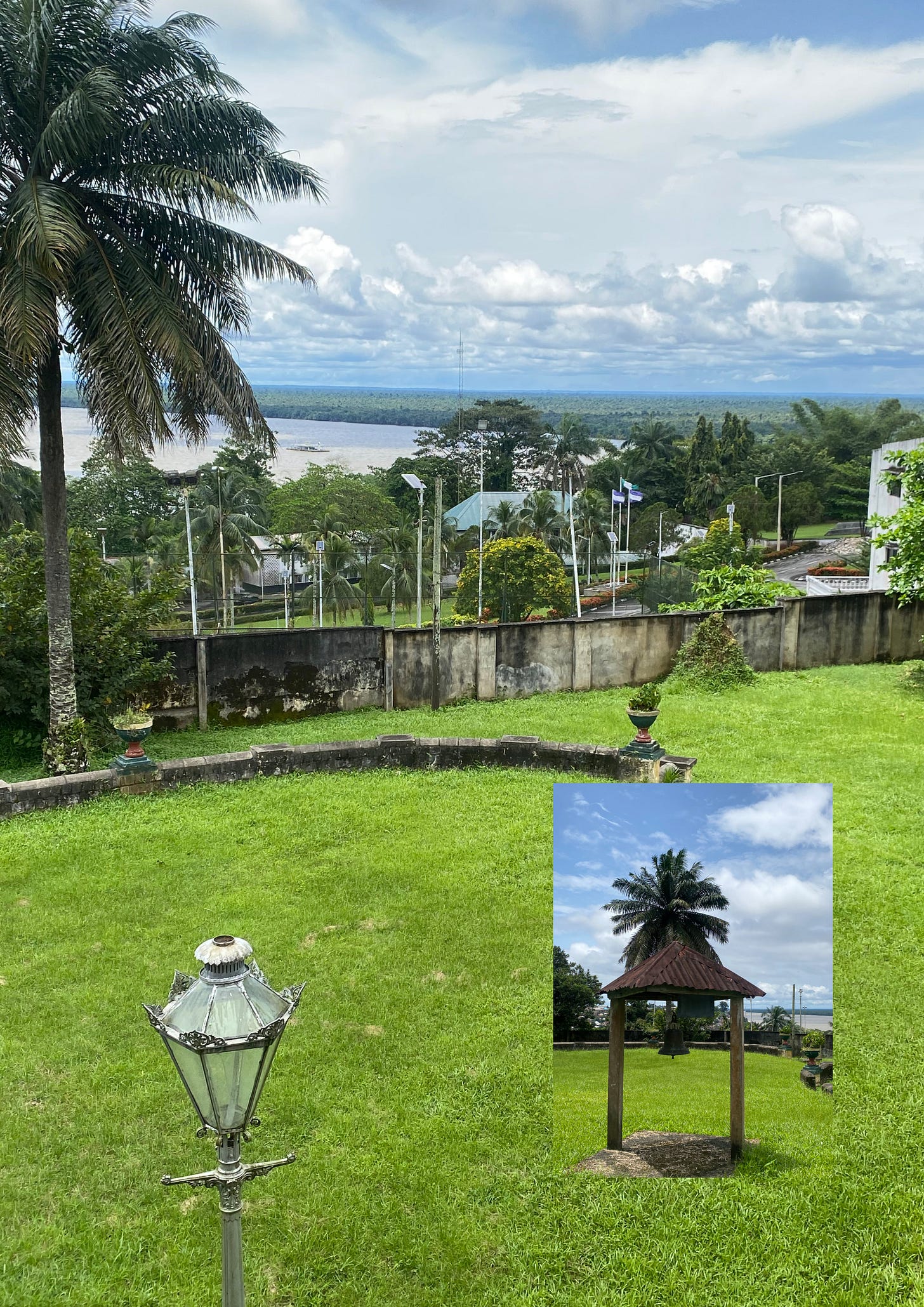
The building was converted into a museum and monument in 1959 to prevent its collapse and was subsequently declared a museum of old Calabar history in August 1986. It is said to house the world's largest quantity of original Nigerian documents and currently holds artifacts, documents, and several materials from colonial times utilized by the Efik, Qua, and Efut tribes, etc., of Old Calabar, like brasswares and ceramics, depictions of the Ekpe masquerade and the Nsibidi writing script used by that society, and a library comprising old books in law, archeology, anthropology, and many more.
My P.O.V.
It is one thing to visit the museum, and it is another to leave or at least decide how many hours I get to spend in there. I completely lose track of time whenever I go through those pearly gates…Do not blame me—this perfect symphony of art, nature, and culture feels like a time-freezing concept—it never feels enough—24 hours would be insufficient. This is my third visit, and I am still in awe: first of the terrain, then the outer look of the structure—stairways and dusty yellow walls, the old telephone booth, the nonfunctional mini water fountain embedded with whelk shells, the outdoor vases made of cement, the old tricycle and fishing boat stationed at the backyard, the view of the river, the luxury of silence, and even the green grass in the rainy season (the best time to visit, truly). With all these and more, one is bound to fall in love.
P.S. You do not need to spend a dime in order to bask in the euphoria of the premises, except you would like a guided tour, especially of the materials inside the museum building, which costs a thousand naira per head.
A Brief Chat with the Museum’s Curator, Mr. Stephen Azele.
When did you assume this position?
January 2024, having previously worked at the Oron Museum in Akwa-Ibom State and Slave Trade Museum in Calabar.
How does the Old Residency Museum acquire art pieces in recent times?
Bequeathments, donations, and even borrowing from other art institutions.
Who/What is your largest source of funding? The Government?
Unfortunately, no; the majority of the museum's funding is done by philanthropists.
What measures does the museum's administration apply when it comes to enlightening the general public about this facility and art in general?
Every year we set up a calendar of events that includes outreaches where we visit schools (at all levels), marketplaces, and other museums; in-house events where we host young people and have them participate in activities of folklore, native language-speaking competitions, and so on; and the celebration of International Museum Day on May 18. All of this is done to better educate people about art and culture as well as what goes on in the Old Residency Museum.
Ongoing Exhibition
Traces of Time, Calabar Exhibition:
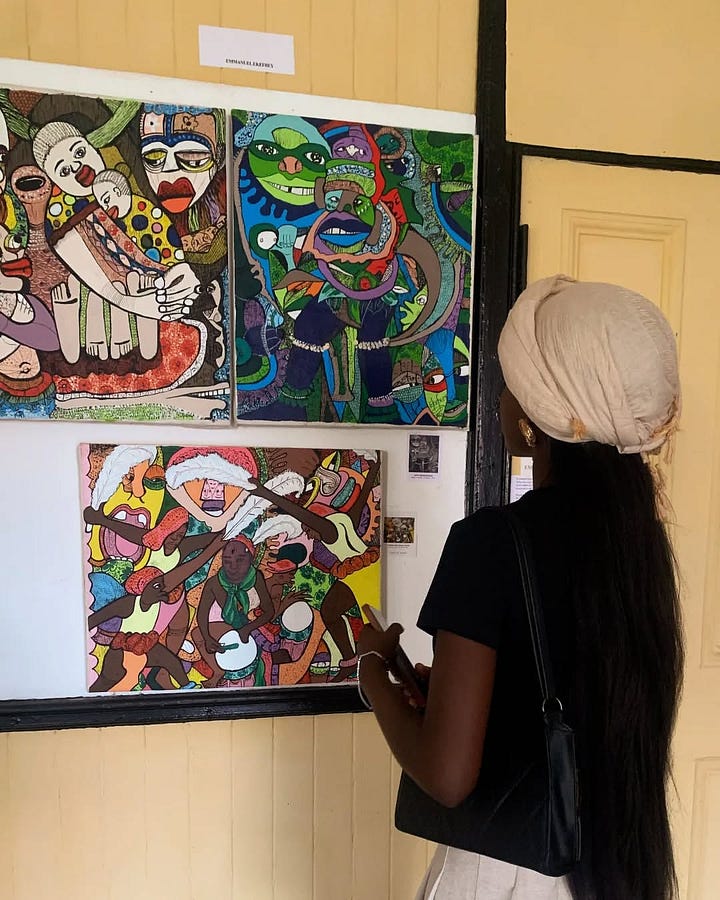
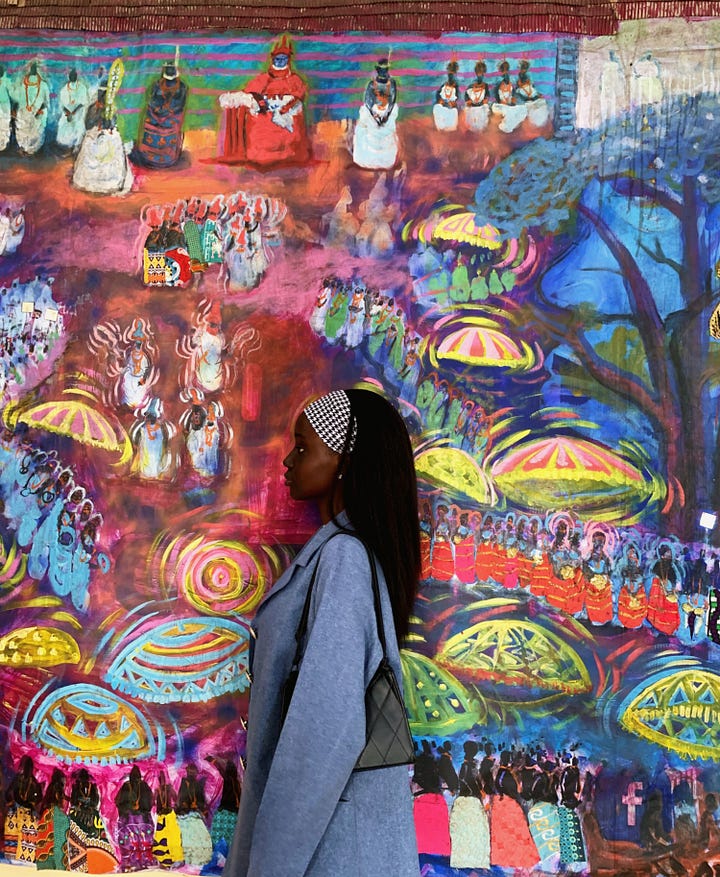
With what is now the second edition of this 16th-21st century contemporary art showcase by Bose Fagbemi (curator) in collaboration with the Cross River State Carnival Commission, this exhibition celebrates the “history of the past into the present and its peeps into the future,” while also honoring the legacy of Ọba Ovọnramwẹn Nọgbaisi (1857-1914), a Benin monarch and the 35th Oba of the Benin kingdom, who fought against the oppressive British colonizers back in the 19th century as they had launched a war against the people of Benin in a bid to expand their colonial empire. He was regrettably defeated and dethroned in 1888, exiled to Calabar, and imprisoned in a dungeon at the now Old Residency Museum. The exhibition honors him by celebrating the beauty of Benin’s artistry and their rich culture, which continue to inspire and educate people around the globe.
This year features works from various local and regional artists: Lucky Paul, Esin Okon, Sukanthy Egharevba, Enotie Oghebor, Joseph Iyala, Chris Echeta, and Joy Moko David-Eroma, who, for the sake of this exhibit, collectively share a common factor of artistic narration using different mediums from different passages of time, from acrylics to oil painting, screen printing, wool on canvas, fibre glass and metal, ceramics, etc.
The exhibition is totally free and runs till the 30th of December, 2024. If you are in Calabar, you should visit.
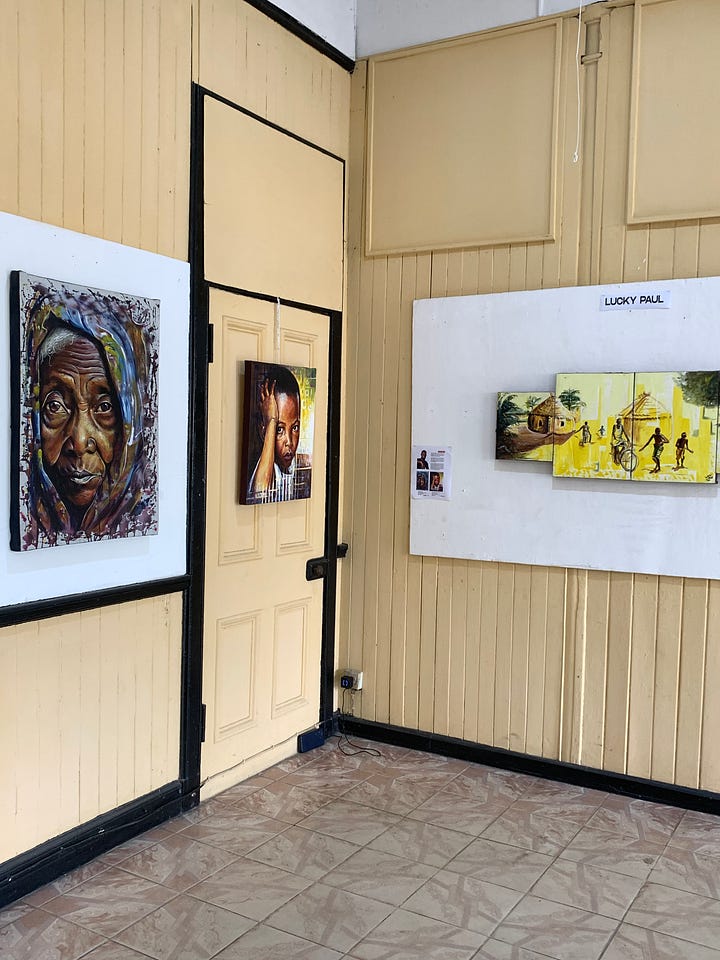
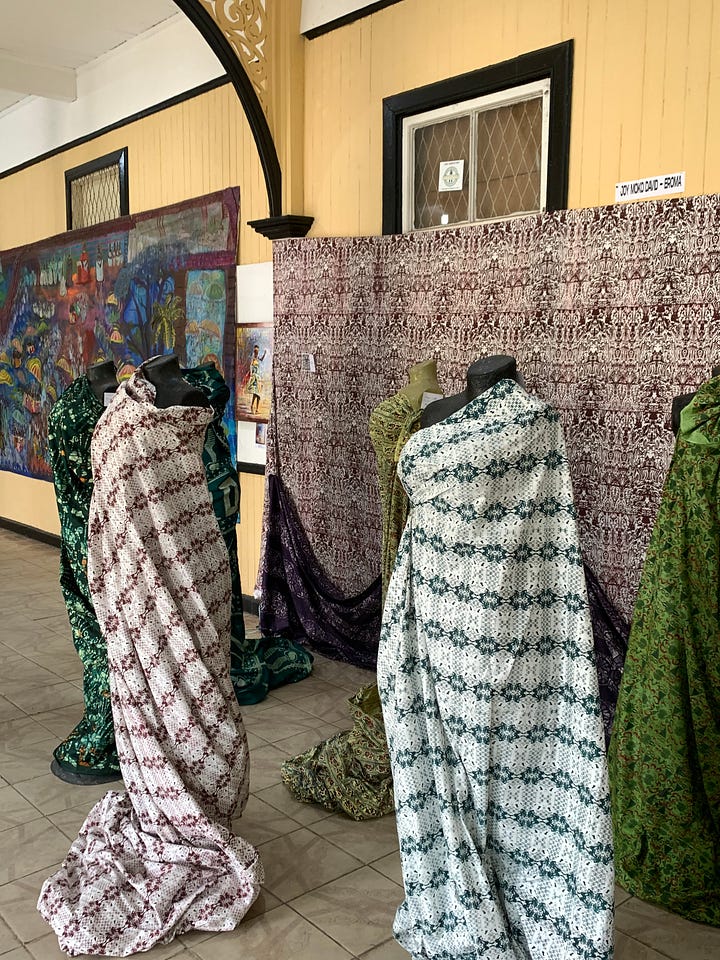

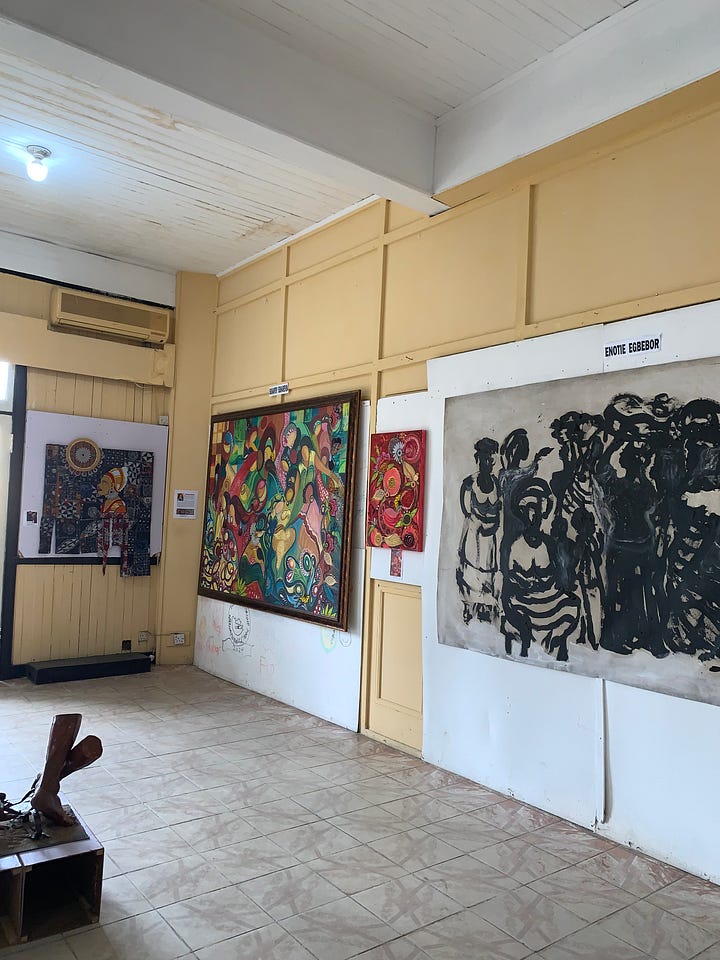
P.s. Every photo or collage with no credits were taken by the author. 
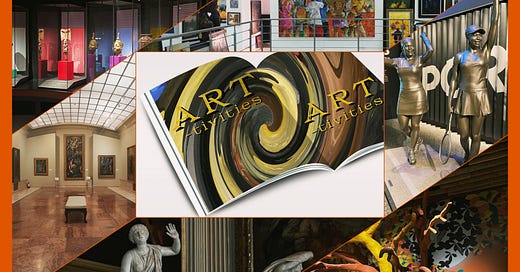


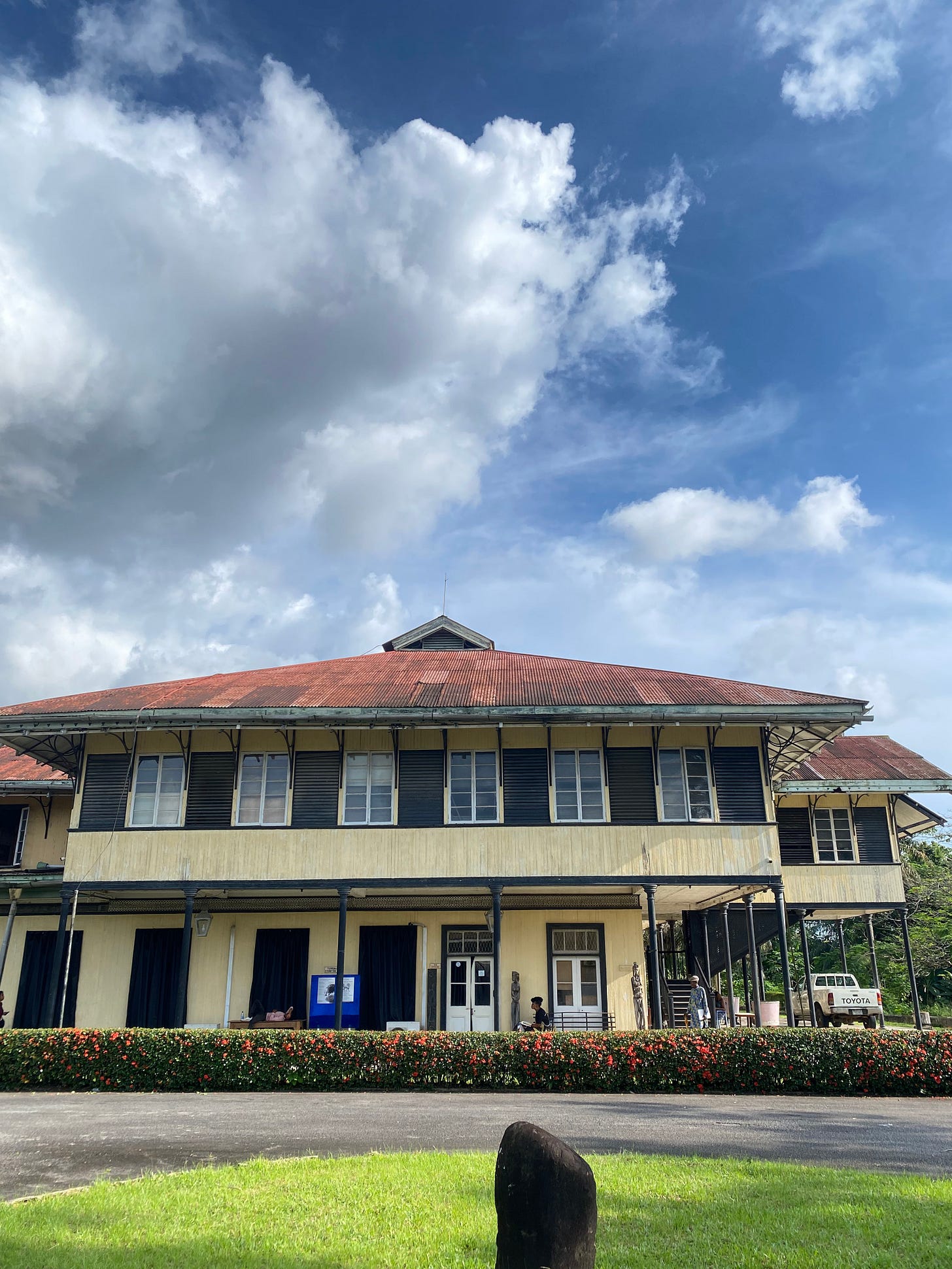
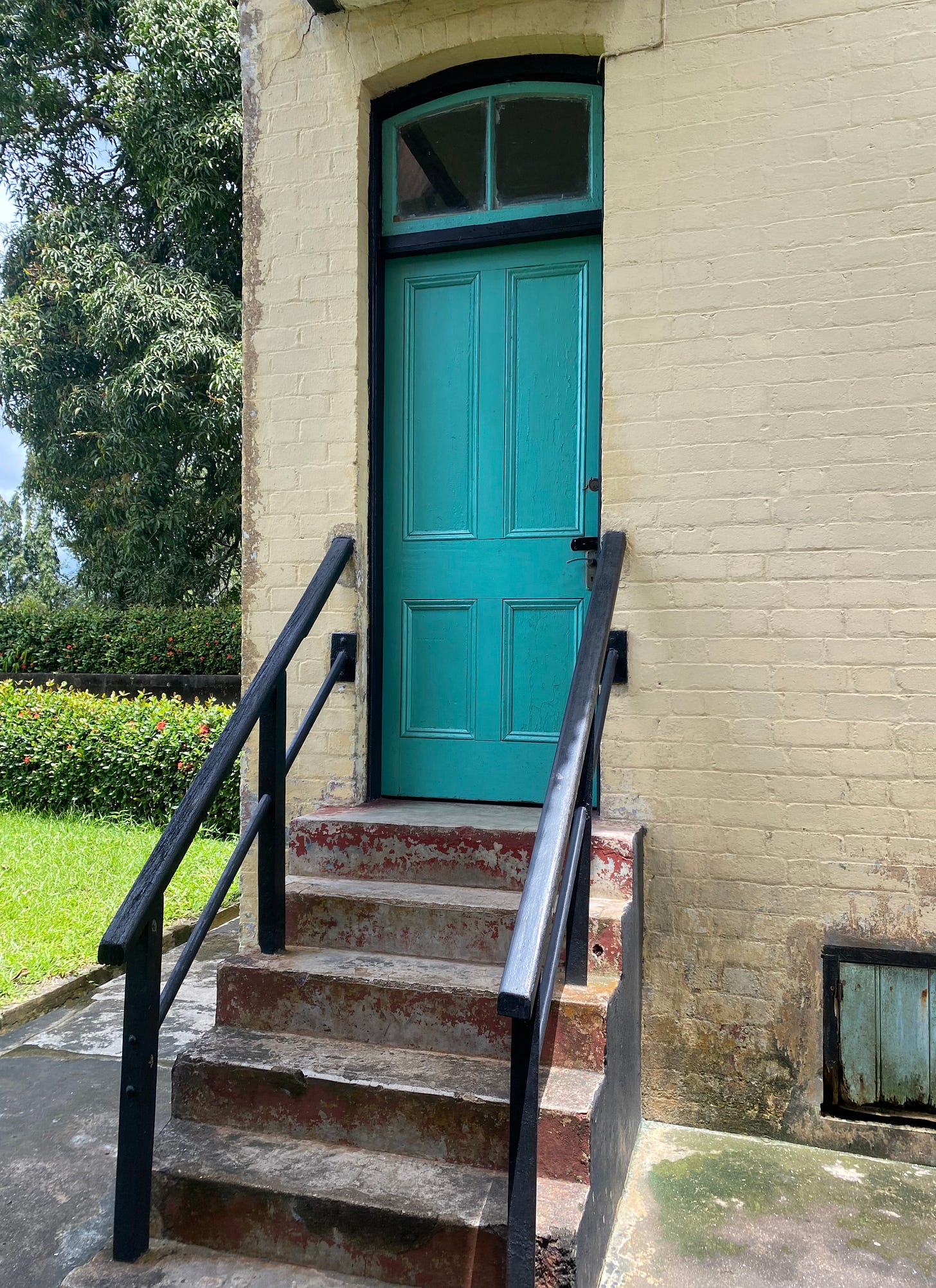
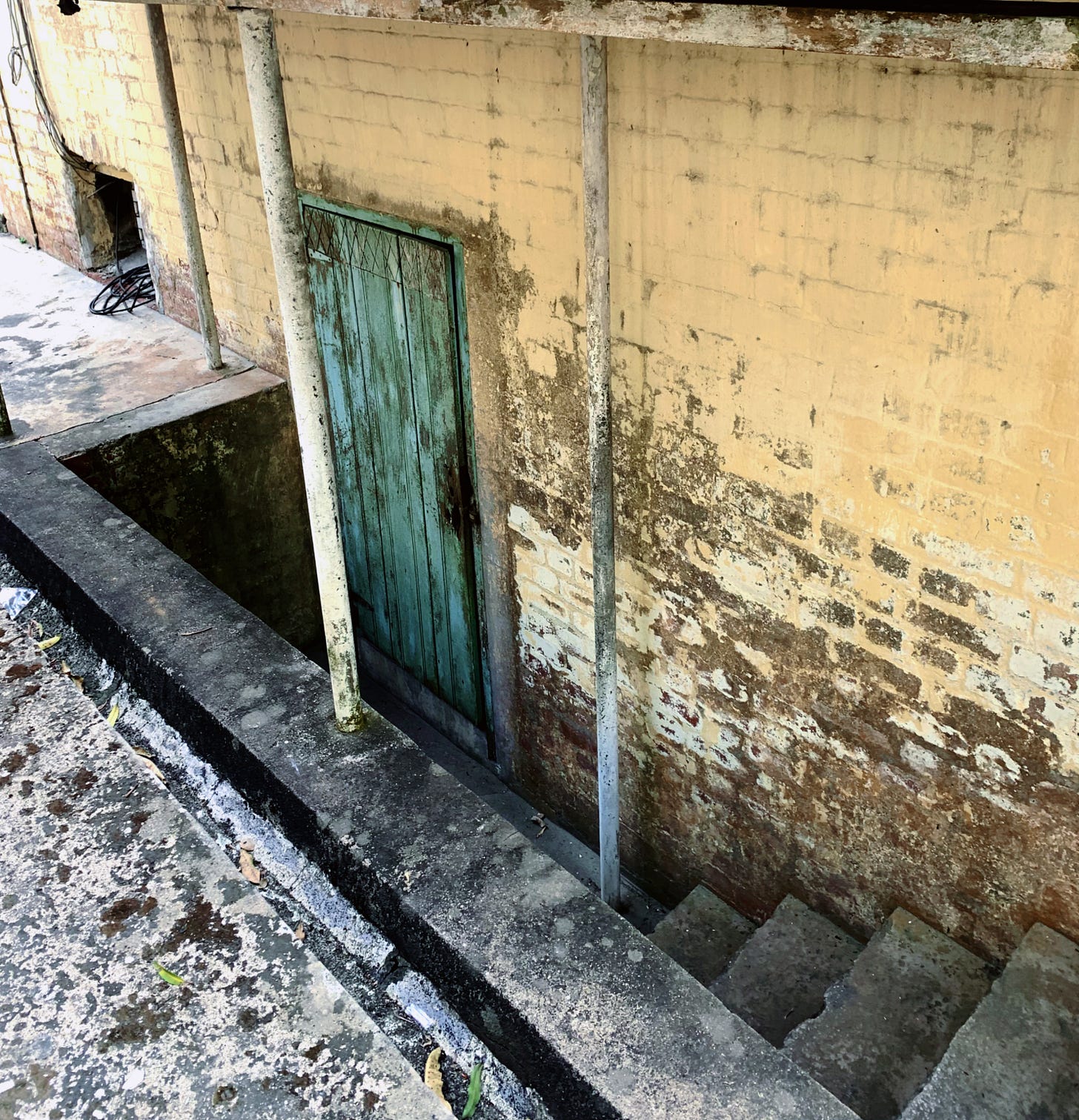
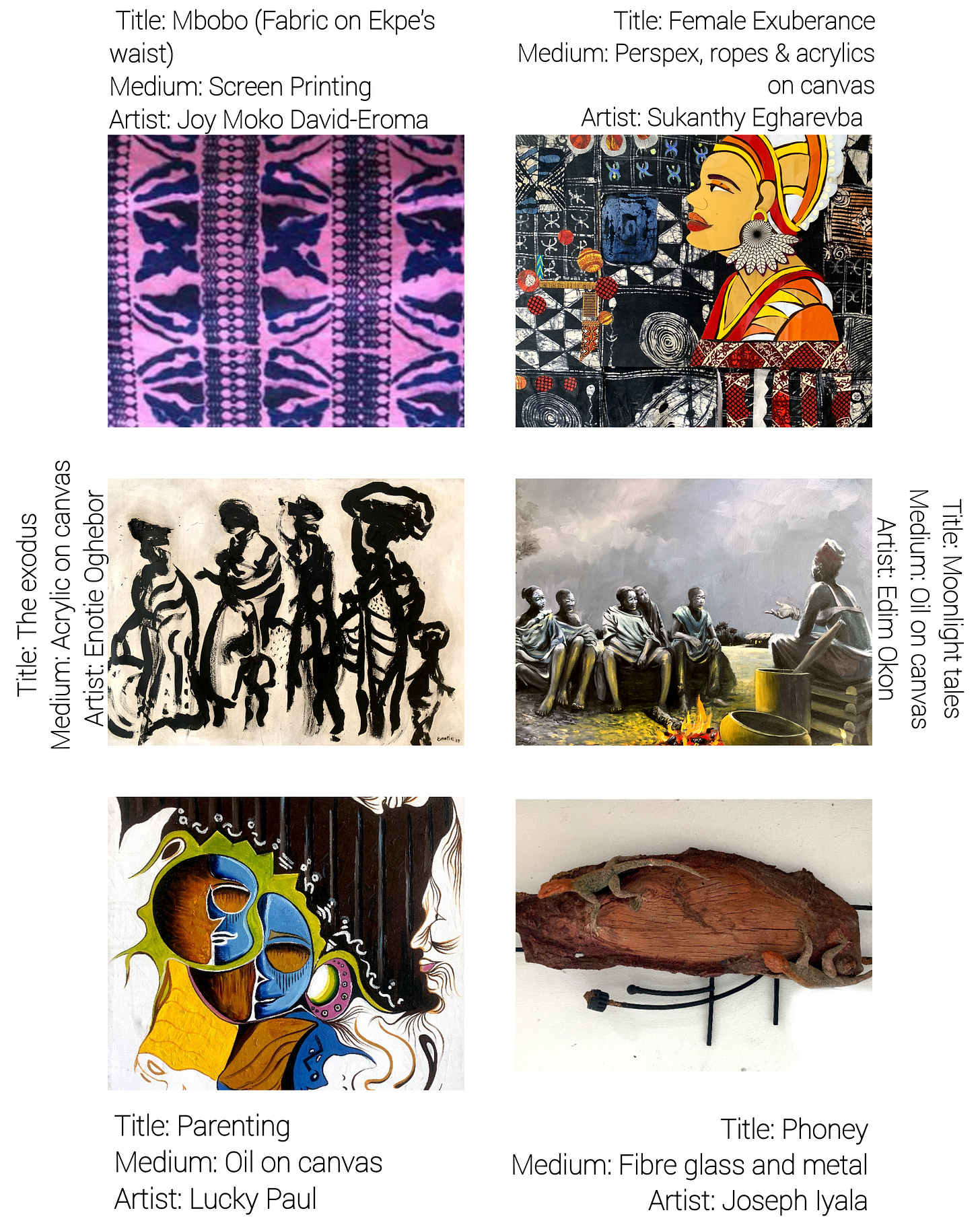


Love this!